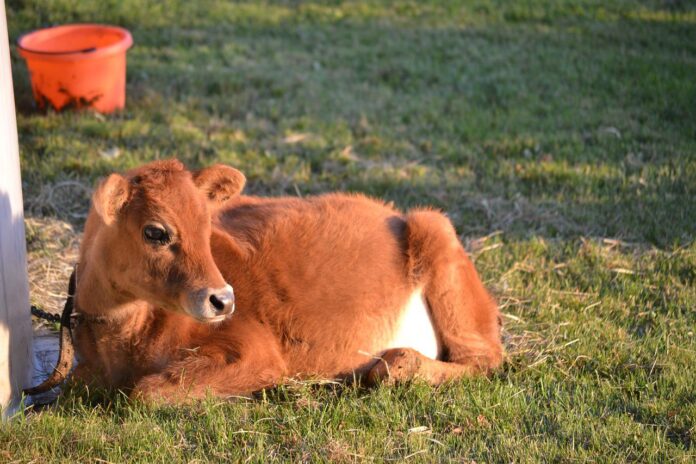The grass is getting greener by the day and livestock are being turned out to pasture as we speak. For many years, cattle producers have purchased and turned out stocker cattle on grass this time of year. The goal is to put on cheap gain, utilizing grazed forages.
While the pounds added to cattle in a stocker operation might be cheap, one thing for certain is that in 2024 calves purchased to be stockers on grass are anything but cheap.
Looking at livestock auction reports in eastern Ohio, 300-500 pound steers last week cost anywhere from $3 to $3.52 per pound for quality steer calves. Heifer calves cost $2.50 to $3 per pound. That is a range of $750 to north of $1,700 per head invested in a calf that will be grazing through the summer.
With that kind of up-front cost in buying cattle this spring, summer grazing is as risky as it has ever been and there are management considerations to account for.
Vitamin m(angement)
There is a science behind running a successful stocker operation. Those who are the most profitable start with the type and kind of cattle that best match their management style.
Just because cattle are high priced, doesn’t mean a stocker operator can sacrifice calf quality at turn out time. For stocker calf grazers that have off farm employment, baseball/softball schedules to work around or may get a case of corn planter-itis in coming weeks, starting with quality healthy calves is paramount.
Buying lesser quality or health challenged calves takes a more intensive management style and requires knowing how to get calves back to health and eating. Remember, you get what you pay for.
An ounce of prevention. A good bill of health is important before turning stocker calves out to grass. Vaccinations for bovine viral diarrhea and bovine respiratory disease are key given the value of these cattle.
Pinkeye
I get asked several questions each year about pinkeye prevention. There are a few options here, including autogenous vaccines, but the best plan of attack is to work with your veterinarian on developing protocols for pinkeye prevention and treatment.
As it relates to pinkeye, producers may choose to feed a fly control mineral.
Those products should be fed roughly 30 days before the fly season in early May into October when temperatures begin to cool off and fly populations subside.
Feed a good quality mineral
The goal of stocker cattle is to add cost effective lean gain to the animal in preparation to enter the feed yard. Most of the pounds added are attributed to growing the frame, lean muscle and expansion of the digestive tract. A good quality mineral that is bio-available to the animal is a must for growth and development of the animal.
Consider risk protection tools. I cannot emphasize enough that stocker calves this spring are a valuable commodity. With all commodities there is inherit risk due to volatility in the marketplace.
While this cattle market looks to be strong and supported by low cow numbers for the next couple of years, having Livestock Risk Protection in place will help in protecting the backside if the market drops.
Think back to last November when the cattle on feed report took the steam out of the cattle market for a few weeks.
Those producers who had risk protection tools in place didn’t feel the effect of that sudden price drop nearly as hard as those who were unprotected.
Many crop insurance companies across the state offer LRP. Reach out to them for more information on premiums and the level of protection offered on a given day. If grazing any significant number of cattle this summer, having a risk management plan might make sleeping at night a bit easier.













